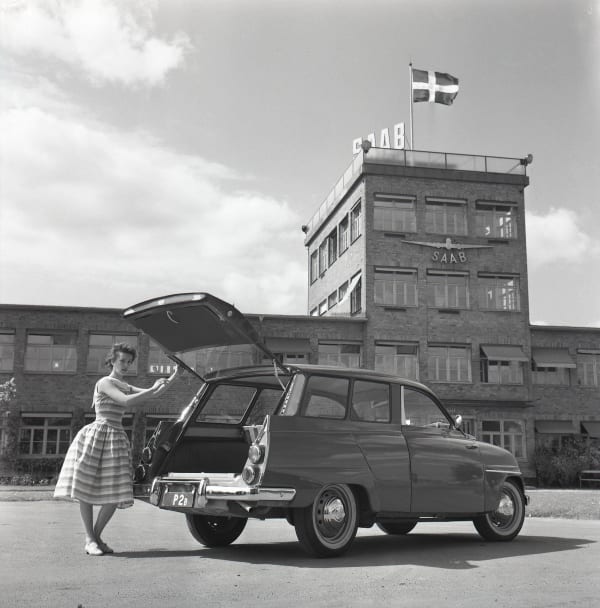Do Saab still make cars?
Many people still think Saab makes cars, even though the business was bought out by General Motors in 2000 and Saab Automobile went defunct back in 2011. But the Saab name is very much alive and well, as one of the world’s most innovative defence and security companies.
The Swedish company Saab is a well known defence and security company since 80 years, yet people still associate its name with the long-gone automobile business, Saab cars.
In fact, Saab began life in 1937 in Trollhättan, Sweden, as an aeroplane manufacturer to provide planes for the Swedish Air Force, just as Europe was steeling itself for another war. The company’s full name was Svenska Aeroplan Aktiebolaget, giving the world the acronym Saab. The head office soon moved to the Swedish university town of Linköping, where this massive company has its largest operation today. It was there in 1945, amid various dreams of diversification, that a project to develop motor cars got underway.
How Saab’s aircraft manufacturing influenced its cars’ design
The Saab car project was called Project 92, as 92 was the next number in the production sequence after Saab 91, the ‘Safir’, a single engine trainer aircraft. Saab’s cars actually owed a great debt to Saab aeroplane design. The company’s aircraft engineers thought they could use their knowledge of aerodynamics from aircraft manufacturing to improve the acceleration compared to that of the German cars that were on the market in Sweden at the time.
The first car was unveiled in Linköping in June 1947, though it was 1949 before production, based in Trollhättan, really got going and those iconic bottle green vehicles hit the roads. Over the intervening years, each new Saab passenger car became instant classics of design, reliability and safety. But as the automobile name grew so too did Saab’s reputation as a defence and security company, serving the global market of governments, authorities and corporations with products, services and solutions ranging from military defence to civil security.
The end of an era: Saab cars go defunct in 2011
Unlike the defence and security business, which steadily developed into a global player, the Saab passenger car story was a more prosaic one. After the company’s 20-year merger with Scania-Vabis came to an end in 1989, American car giant General Motors took a 50 per cent share of the new Saab Automobile business before making the company a wholly-owned subsidiary in 2000. Saab cars were no longer made by Saab.
Saab cars’ future was therefore wrapped up with that of General Motors, and when the American parent company’s own fortunes began to nosedive in 2008, so did its Swedish subsidiary. A change of ownership to include Dutch car maker Spyker could not halt the decline, and the Saab cars business was lost for good when Saab Automobile AB filed for bankruptcy in December 2011.
Saab today: air, land, naval, security and civil aerospace solutions
Many people think that the Saab name was completely tied up in Saab cars, but that’s not the case. Saab is still one of the biggest names in Swedish industry, as Saab goes from strength-to-strength in defence and security.
Today Saab offers solutions for air, land, naval, security and civil aerospace solutions. The company employs more than 16,500 people, and has annual sales of around 31 billion Swedish kronor (nearly 3.38 billion US dollars at time of writing). About a quarter of Saab’s sales revenue is reinvested into research and development. There are many examples of Saab’s products, but among the most iconic are the Gripen fighter system, the Saab Kockums Gotland Class submarine, and the weapon system Carl-Gustaf.
Saab cars may be gone, but Saab lives on.

Saab Cars evolution over the years
- 1937: Saab is founded in Trollhättan, Sweden, as an aircraft manufacturer
- 1946: The Saab cars business begins
- 1947: The first Saab car is launched
- 1955: Première of Saab 93 car, which is a huge success
- 1960: Saab buys AB Nyköpings Automobilfabrik, ANA
- 1967: Saab 99 car is unveiled
- 1968: Saab merges with Scania-Vabis, and Saab-Scania is born
- 1989: Saab cars is separated from Saab-Scania and becomes its own business, Saab Automobile. US carmaker General Motors buys 50 per cent of the Saab cars company to become co-owner
- 2000: General Motors takes over the whole Saab Automobile business – Saab Group no longer makes Saab cars and has no further involvement in automobile manufacturing
- 2011: After General Motors experiences financial difficulties, and various takeover scenarios fail, Saab Automobile files for bankruptcy in 2011, meaning the end of the Saab car business
1937 – present day: Saab continues to develop as one of the world’s most innovative defence and security companies